Most everyday glass is clear but stained glass windows in churches and homes are beautifully colored. How does stained glass get its wonderful colors? Find out from a stained glass expert.
Glass is made by fusing silica sand mixed with alkalis such as potash or soda, and lime. The color is produced either by adding a metallic oxide to the raw materials or by staining the surface with special paints.
The term “stained” glass is really a misnomer. Most so-called stained glass in church and residential windows is colored glass produced by adding metal compounds to the glass formula. A second, and important, category of colored glass is produced by paint or stain applied to the surface (and often fired onto the glass in a kiln). Jump to this section to learn about painting on glass.
Table of contents
- Glass colored by the addition of metallic compounds
- Glass colored by staining with “silver stain” or paint
- The history of stained glass
- What exactly causes the colors in colored glass?
- Emotional & spiritual symbolism of color
- Why not experience the beauty of colored stained glass?
- Silver stain on glass
- Painting on glass
- Stained glass needs light
- Significance of colors in Christianity
- Faux stained glass
- Which should you choose for your home – etched or stained glass?
Glass colored by the addition of metallic compounds
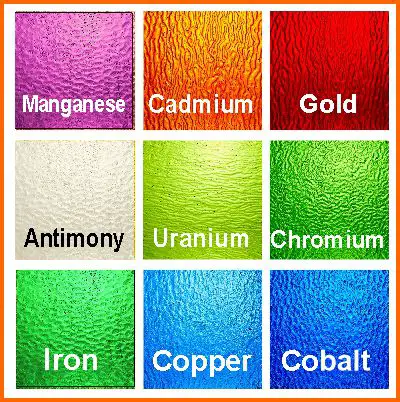
Most “stained” glass is really just clear glass that has been colored by the addition of metallic compounds or elements. Colored glass comes in two main varieties – Cathedral (transparent) glass or opalescence (opaque) glass. Jump to this section for a list of metallic elements and their corresponding glass colors.
Glass colored by staining with “silver stain” or paint
The origin of the term “stained” comes from the silver stain that was developed in Medieval times to decorate stained glass panels in churches. It was mainly used to paint faces, hands, and feet of figures – details that cannot be easily represented by lead lines.
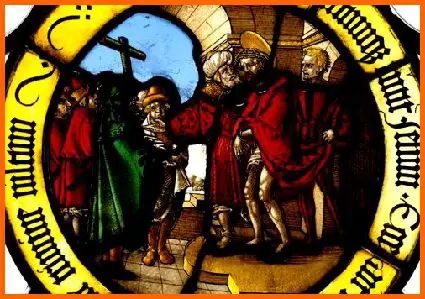
Painted stained glass is produced by applying “stains” or paints to the surface and firing the painted glass in a furnace or kiln. Follow this link to learn more about silver stain.
Laminated glass (colored by a vinyl interlayer)
A less important category of colored glass is made by sandwiching a colored vinyl interlay between two sheets of clear glass. This type of product has the benefit of being available in large sheets suitable for architectural applications.
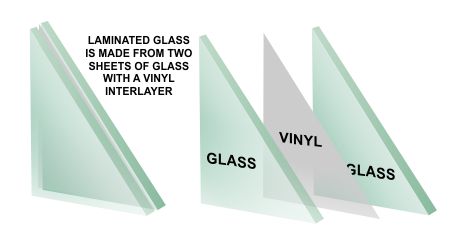
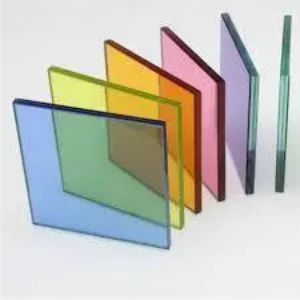
Follow this link to learn about tinted architectural glass.
As an Amazon Associate, I earn from qualifying purchases
The history of stained glass
Glass had been known since Egyptian times but it was not until the so-called “father of chemistry”, the Shi’ite scholar Jabir ibn Hayyan (known as Geber) in the 9th century that the technique of coloring glass was first understood. Geber discovered that the addition of metal oxides could change the tint and hue of glass and he recorded dozens of formulae.
The knowledge of glass coloration reached its early pinnacle in the work of medieval stained glass artists and craftsmen building the monumental gothic cathedrals of Europe.
Stained glass in the Gothic cathedrals
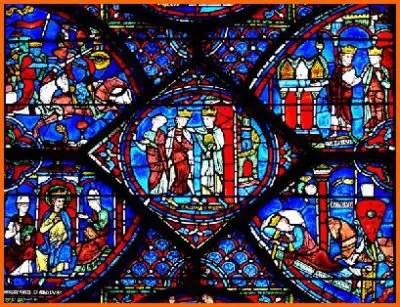
Astonishing use of color in this 13th-century masterpiece of stained glass from Chartres Cathedral. Note the extensive use of cobalt blue and the bright red lites (made with the addition of gold).
John La Farge and Louis Comfort Tiffany
The 19th century saw revolutionary artists like John La Farge and Louis Comfort Tiffany create works with opalescent stained glass. Tiffany despaired of purchasing glass from Europe and so hired his own expert from England (Arthur J. Nash) to manufacture glass for him in the USA.

Sunset landscape with wisterias by Louis Comfort Tiffany represents the use of custom-made opalescent glass to represent the colors and textures of nature. Sunset, distant hills and shimmering water are realistically rendered using opalescent glass and a technique of multilayering called “plating”.
Modern (20th century) stained glass
The 20th century saw the birth of modernism in stained glass with major artists like Henri Matisse, Georges Braque, and Fernand Léger designing windows in abstract styles but still taking full advantage of the vibrancy and brilliance of color.
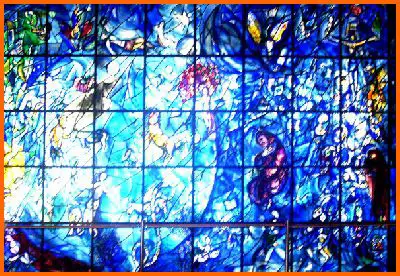
Peace window by Marc Chagall
Installed in the UN building in New York in 1964, the Peace window was dedicated to the memory of Dag Hammarskjöld. Characterized by cobalt blue glass, it features references to Beethoven’s 9th Symphony.
So what exactly causes the colors in colored glass?
Various types of metal compounds and elements are responsible for the vibrant colors of stained glass. Note particularly that you will pay a premium for red glass because it contains gold.
Common compounds and their associated colors are:-
- Deep blue or violet: Cobalt oxide
- Light blue or green: Copper compounds
- Purple: Manganese oxide, nickel
- Yellow: Cadmium sulfide
- Ruby red: Gold chloride
- Reds: Selenium compounds
- White: Antimony oxides
- Yellow/amber: Sulfur
- Fluorescent yellow-green: Uranium oxides
- Emerald green: Chromic oxide
- Greens and browns: Iron oxides
- Amber/brown: Sulfur compounds
- Ambers & browns: Carbon oxides
- Deep amber & amethyst: Manganese oxides
- White: Tin compounds
- Black: Manganese + cobalt + iron

Emission peaks in a metal halide lamp show how colors are associated with specific electromagnetic wavelengths. Metal ions in the lattice of the glass absorb certain wavelengths of light, varying depending on the metal, leading to the appearance of color.
Emotional & spiritual symbolism of color
The wonder of color allowed representations of biblical stories to be presented to peasants not only as a kind of poor man’s bible allowing believers who could not read Latin to learn the stories of the gospels but also as man’s message to the creator, in praise of the Lord, illuminating their cathedrals with multicolor lights as if from heaven itself. Glass colors developed a vocabulary of symbolism in Christianity that is summarized here:
Why not experience the beauty of colored stained glass?
Stained glass is a wonderful hobby
Get started with this collection of all the tools & supplies needed to set up your own home studio. Quality tools, lead, stained glass, and solder.
Silver stain on glass
The term “stained” comes from the use, in the early 1300s, of silver stain. Silver compounds (notably silver nitrate) are mixed with binding substances (like gamboge gum), applied to the surface of glass, and then fired in a kiln. They can produce a range of colors from orange-red to yellow. Used on blue glass they produce greens. The way the glass is heated and cooled can significantly affect the colors produced by these compounds
The method of silver staining has remained the same since the 14th century. The pigment is combined with ingredients such as gamboge clay and turpentine to help the mixture lay smoothly on the glass. Heating the glass and stain in a kiln creates a chemical reaction causing an ionic exchange between the glass and the silver to produce a range of yellows on the surface of the glass. These can range from pale lemon to dark orange. Unlike paint, which when heated becomes fused to the glass surface, the yellow stain actually becomes a part of the glass

Ecce Homo panel circa 1525
Glass painted with vitreous paint and silver stain (after Sebald Beham), Nuremberg, One of a pair from the Metropolitan Museum of Art.
Painting on glass
Combined with silver staining, glass paints were applied starting in the middle ages to define the details of eyes and facial features. The artists used vitreous paints – that is paint composed of finely ground glass particles mixed in a fluid to produce bold opaque lines (sometimes called grisaille painting) that were fired in the kiln to fix them permanently to the glass. In subsequent years a wide range of glass colors and enamels has been developed to extend the palette of the glass artist.
Stained glass needs light
Look at any church windows as you drive down the street and you will notice that the stained glass looks dull, gray, and uninspired. This is because colored glass needs, above all things bight light to bring it to life.
Stained glass and sunlight
To stand in front of a stained glass window illuminated in bright sunlight is a magical experience. In the video below, gold imparts a bright red color to the glass – a color that is projected as a spectacular slide show on the white tiled floor.
Looking more closely, you can see the way the handmade water-glass distorts the light, giving a natural organic quality with ripples trapped forever in the heart of the glass – ripples that were frozen in as the hot liquid cooled.
Stained glass and lamplight
Other classic examples of the way stained glass comes to life when illuminated are the amazing leaded glass lampshades invented by Louis Comfort Tiffany:-
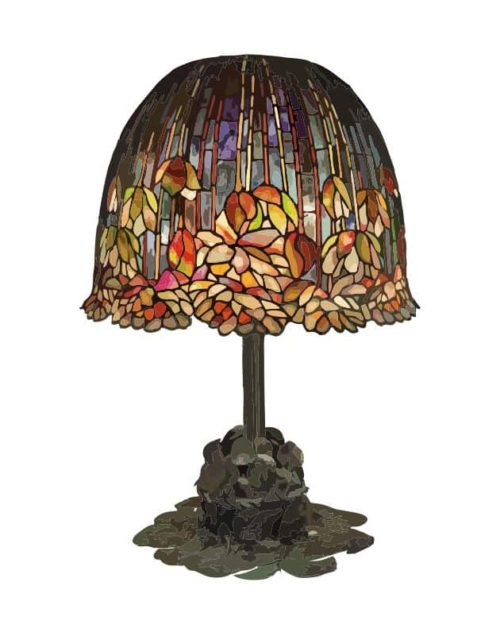
According to Christie’s – “A rare and important ‘Pond Lily’ table lamp, circa 1903. Leaded glass, patinated bronze. 26½ in (67.3 cm) high, 18 in (45.7 cm) diameter of shade.” Sold for $3,372,500 on 13 December 2018 at Christie’s in New York.
Tiffany adapted the copper-foil method to create masterpieces of glass art in the early 20th century.
Significance of colors in Christianity
Red: is the color of blood and represents the blood of Christ or the martyrdom of saints. It can also indicate strong emotions such as love or hate.
Blue: (the color of the sky) indicates heaven, the Holy Spirit, hope, and truth. Lighter shades of blue are sometimes used to represent the Virgin Mary.
Green: (the color of trees and grass) is optimism, growth & renaissance being the color of nature.
Violet: is passion, suffering, agony, truth & love.
White: depicts purity, holiness, virtuousness, chastity, and innocence (often associated with Jesus/God).
Black: black symbolizes suffering and death in the Bible but in windows, it is only seen as outlines (grisaille) defining figures in religious stained glass.
Yellow: represents the joy and presence of God. It is also used for the haloes of saints, or the Gates of Heaven and to symbolize divinity, power, and glory.
Gold: represents God’s holiness, majesty & divinity.
Brown: means renunciation of worldly possessions and a symbol of existential angst and death.
Purple: was the color of kings, and important people so is used to depict royalty or God the Father.
Faux stained glass
We have concentrated here on traditional stained or colored glass that is assembled into windows with metal came or copper foil. There are substitutes for the real thing that appeal to the frugal shopper but not to the purist. Consider these options available on Amazon if you would like to save money:
Which should you choose for your home – etched or stained glass?
The bottom line is that colored glass costs much more than etched glass. So if you are on a budget, etched glass is generally the better choice. Check this post for full details.
All you need to know about art glass
Commissioning stained and etched glass
- Stained glass designs from Artistry in Glass
- How to commission a stained glass window – complete advice
- How to commission an etched glass window
- How to choose the best stained glass design
- Etched or stained glass – which is better for your home?
- How much does stained glass cost?
- How much does etched glass cost?
Technical information
- Is leaded glass dangerous? Learn the facts.
- How to replace broken patio table glass
- Plexiglass and glass – what are the pros and cons?
- What is plexiglass used for?
- What costs more – glass or plexiglass?
- Preservation of stained glass in churches & synagogues
- How does stained glass get colored? learn from an expert!
- Is your broken stained glass panel worth repairing?
- How to protect stained glass in religious buildings
- How to care for and clean stained glass
- How to repair cracked stained glass
- What is Dalle de Verre?
- How to repair Dalle de Verre
- What to do about bowed & sagging stained glass
- How to care for a stained glass skylight
- Can my stained glass lampshade be repaired?
- What is the difference between sandblasting & etching?
- Obscure and frosted glass – all you need to know!
- How to save money when buying glass
- Glossary of important terms used in decorative glass
- 14 Ways to sell stained glass
- What is imitation or faux stained glass?
Guides to stained glass design
- Guide for designing abstract stained glass
- Why choose abstract contemporary stained glass
- How to design a Frank Lloyd Wright-style window
- Designing a WWII-era stained glass Waco glider
- Stained glass and Black Lives Matter
- How Is stained glass used today?
Artistry in Glass was your source for antique repair in Tucson
Check out this amazing selection of informative articles:-
- Where can I get antiques repaired?
- Are broken antiques worth fixing?
- How to fix a broken picture frame
- How to repair a broken china plate
- How to repair a broken china teapot
- How to fix a broken marble slab
- How to repair a broken china coffee mug
- How to repair a 2000-year-old sculpture
- All about repairing stained-glass lampshades
- How to care for your stained glass skylight
- How to repair Dalle de Verre
- Is stained glass worth repairing?
- To repair or toss out?
- Tucson crystal & china repair a division of Artistry in Glass
- What to do with broken antiques
- Is lead crystal dangerous?
- Repairing an antique Mexican statue
- Repairing religious statues
- The history of Swarovski crystal figurines
- How to find the value of a Swarovski Crystal figurine
- Have Swarovski crystal figurines lost value since 2009?
- How to collect Swarovski annual ornaments
- How to display Swarovski crystal figurines
- How to authenticate a Swarovski crystal figurine
- How to display Swarovski annual ornaments
- How to clean Swarovski crystal figurines
- How to repair a Swarovski crystal mouse
- How to repair a Swarovski annual ornament
- How to repair a Swarovski crystal train set
- Fixing broken wine glass stems
- How to clean cloudy glasses
- Why do wine glasses have stems?
- Swarovski Crystal Figurines
- How to repair a chip in a wine glass
- How to fix a scratched glass tabletop
- How to replace a broken patio tabletop








